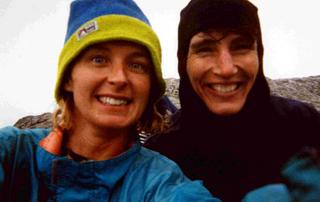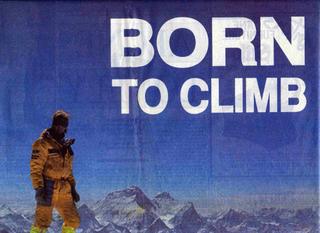
Wendy Steele and sister Katie ( closest to camera) high on the north face of Leaning Peak making the 1st female ascent, September 2003. At 410 metres, it is arguably the longest bolt-free climbing route in Australia.
This site is an archive of documents, images, interviews and other information relevant to the origins of climbing in Australia. Comments are welcome (meadowsmh@gmail.com). Text copyright 2024 M.Meadows. Copyright to photographs is held by named photographers. Please request permission to reproduce.


 Challenges
ChallengesRick White returned to the Himalayas for a second time with Michael Groom in 1991 to climb Everest, but the trip ended in disarray with White having to fly home urgently to attend to a business crisis. With a long-time financier going to the wall, White was virtually forced out of Mountain Designs with huge debts. But by 2000, he was getting restless again and set up a small, hi-tech sleeping bag design and manufacturing company. In 2001, he was invited back to Mountain Designs by a new owner as adviser in research and development of new products, or, as he wryly observed, ‘as a walking historian’. His extraordinary business career had come almost full circle. It was during this period of re-adjustment that White had to confront a new and unknown challenge—a muscle-wasting illness called inclusion body myositis: ‘It was diagnosed in 1991 after I came back from Everest and I suspect I got it in 1990 after going to Cho Oyu. I definitely had it before I went to Everest because I was getting weak and then I got stronger by training but as soon as I stopped, it just went boom…really, really weak.’ For someone who had made a career out of climbing and who had played a major role in Australian climbing for more than a quarter of a century, it was a bitter blow. But his approach to this was characteristic of the attitude which propelled him into the ranks of Australia’s top climbers. White took up coaching a small group of talented sport climbers and insisted on taking part in significant milestones at Frog Buttress until his death from a brain tumour in 2004.
Picture: Rick White abseiling down Infinity at the 1998 Frog Buttress anniversary. Michael Meadows collection.